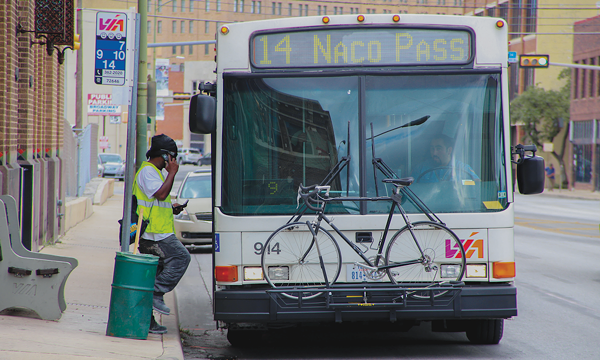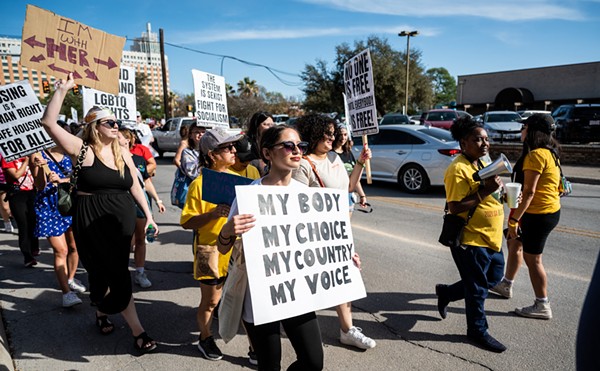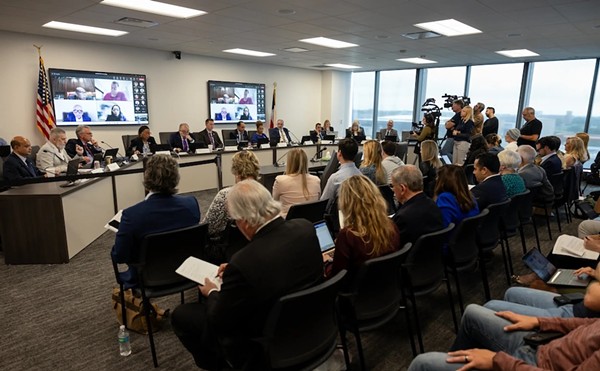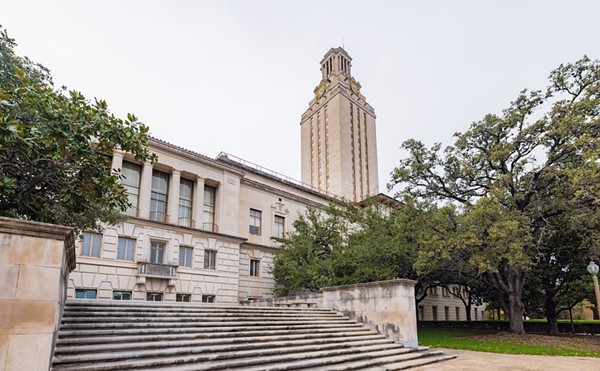San Antonio’s metropolitan transit authority plans to create high-speed transit corridors to relieve congestion and speed up rides. It’s already purchased lower-emitting buses and slashed the waits on many routes.
On top of that, the nonprofit ConnectSA, created this year by Mayor Ron Nirenberg and Bexar County Judge Nelson Wolff, is mulling ways to create a modern, multi-modal transportation system in which VIA would be a key player.
But all of that may stall if city leaders can’t boost funding for VIA, which lags that of Texas’ other big cities. And not just by a little.
“I think you’re going to see a lot of energized conversation around transportation after November,” said Councilman Rey Saldana, referring to the midterm elections, which have city leaders fending off three punitive ballot measures from the fire union.
“When you lay out all the cards, I think people will agree that we’ve been ignoring VIA for too long, ignoring the hardworking blue-collar people who rely on it.”
While city and VIA officials say there’s no set route for boosting the agency’s funding, that’s bound to be a key part of the plan ConnectSA unveils next year. Nirenberg has said it could come before voters as soon as May or November in 2019.
“All potential funding sources are on the table for review,” Nirenberg told the Current.
Getting to the root of VIA’s current funding limitations requires a little math. Don’t worry, we’ll make this as painless as possible.
Most of VIA’s funding comes from a half-cent sales tax. That stands in sharp contrast to the full cent of sales tax that funds public transportation in Texas’ three other biggest cities. As a result, VIA’s 2016 calendar-year budget of $170.7 million was anemic compared to Dallas’ DART, which got $546.22 million and Houston’s METRO, which received $514.36 million. Even Austin’s smaller Capital Metro pulled in $222.35 million.
Over time, those discrepancies add up. Over 20 years, the cumulative effect is that DART has received $5 billion more than VIA.
Imagine how much worse that will get if San Antonio gains a million new residents by 2040. Part of ConnectSA’s charge for revamping public transit is to keep that new growth from turning the Alamo City into Gridlock Hell.
So, why not just up sales tax collections by a half penny and throw it VIA’s way?
The solution’s not that simple. Under state law, municipalities can only impose up to 2 cents of sales tax. At present, San Antonio is at that limit.
As a result, ConnectSA will need to consider some non-traditional funding ideas and weigh how to reshuffle the money already collected through local sales taxes, said Jeffrey Arndt, VIA’s president and CEO.
“I have every confidence in ConnectSA and the emphasis the mayor and judge have on putting together a comprehensive transportation plan,” he said.
While state and local funds could be part of that mix, those often rely on local matches, Arndt said, so there’s not much way for San Antonio to avoid footing the bill.
One option is to shake up the usage of Advanced Transportation District dollars, which are derived from local sales tax. Currently, ATD funds are split between VIA, the city of San Antonio and Bexar County, but the city and county could boost the metro’s funding by cutting theirs.
Another might be a fee assessed to utility bills, such as the Transportation User’s Fee which the City of Austin uses to pay for street maintenance and repair.
But even those may not be enough.
Other potential sources include the 1/8 cent of sales tax currently funding Pre-K for SA, and another 1/8 cent that lets the city buy land to limit development over the Edwards Aquifer. Theoretically, both programs could be paid for other ways, freeing up more sales tax for VIA.
Of course, either of those solutions would require serious, perhaps contentious, discussions with program supporters – and, in Pre-K 4 SA’s case, convincing voters that more VIA funding won’t diminish a popular program.
Meredith McGuire, a committee co-chair for the local Sierra Club chapter, said she welcomes efforts by VIA to modernize its system and curtail emissions, but not at the expense of protecting the aquifer.
“In many respects, we need money for both,” she said.
And that’s the challenge as San Antonio girds for more growth — it doesn’t come cheap.
Stay on top of San Antonio news and views. Sign up for our Weekly Headlines Newsletter.




















